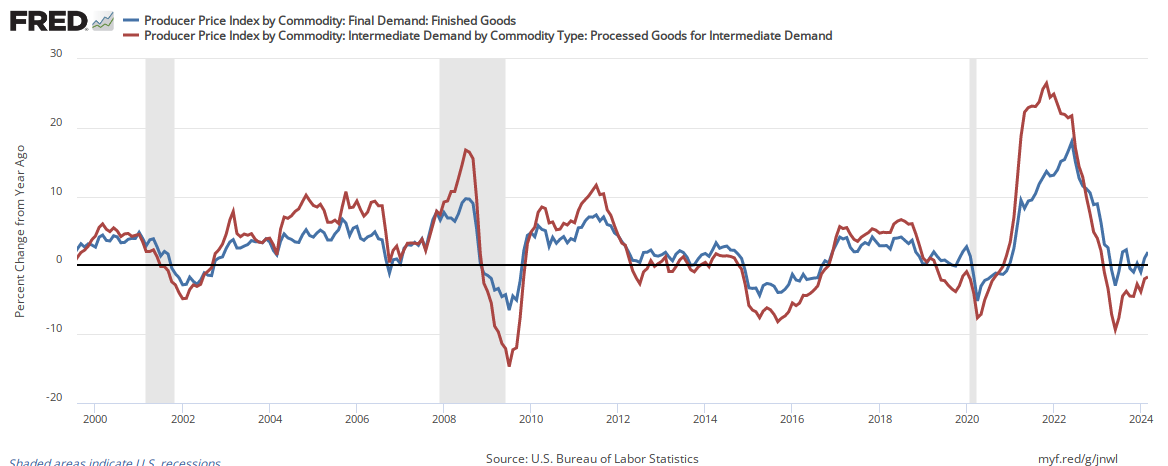July 2018 Producer Price Final Demand Year-Over-Year Inflation Marginally Declined
The Producer Price Index year-over-year inflation declined from 3.4 % to 3.3 %.

Analyst Opinion of Producer Prices
The Producer Price Index declined year-over-year. Food and energy prices did moderate. Here is what the BLS said in part:
Final demand goods: The index for final demand goods inched up 0.1 percent in July, the same as in June. The July advance in prices for final demand goods can be traced to a 0.3-percent rise in the index for final demand goods less foods and energy. In contrast, prices for final demand energy fell 0.5 percent, and the index for final demand foods decreased 0.1 percent.
Final demand services: Prices for final demand services edged down 0.1 percent in July, the first decline since falling 0.2 percent in December 2017. The July decrease is attributable to the index for final demand trade services, which moved down 0.8 percent. (Trade indexes measure changes in margins received by wholesalers and retailers.) In contrast, prices for final demand services less trade, transportation, and warehousing and the index for final demand transportation and warehousing services advanced 0.3 percent.
The PPI represents inflation pressure (or lack thereof) that migrates into consumer price.
The market had been expecting (from Nasdaq / Econoday):
| month over month change | Consensus Range | Consensus | Actual |
| PPI-Final Demand (PPI-FD) | 0.1 % to 0.3 % | +0.3 % | +0.0 % |
| PPI-FD less food & energy (core PPI) | 0.2 % to 0.3 % | +0.3 % | +0.1 % |
| PPI-FD less food, energy & trade services | 0.2 % to 0.3 % | +0.2 % | +0.3 % |
The producer price inflation breakdown:
| category | month-over-month change | year-over-year change |
| final demand goods | +0.1 % | |
| final demand services | -0.1% | |
| total final demand | +0.0 % | +3.3 % |
| processed goods for intermediate demand | +0.0 % | +6.8 % |
| unprocessed goods for intermediate demand | +2.7 % | +8.2 % |
| services for intermediate demand | +0.2 % | +3.0 % |

z ppi1.png
In the following graph, one can see the relationship between the year-over-year change in intermediate goods index and finished goods index. When the crude goods growth falls under finish goods - it usually drags finished goods lower.
Percent Change Year-over-Year - Comparing PPI Finished Goods (blue line) to PPI Intermediate Goods (red line)

Econintersect has shown how pricing change moves from the PPI to the Consumer Price Index (CPI).
Comparing Year-over-Year Change Between the PPI Finished Goods Index (blue line) and the CPI-U (red line)

The price moderation of the PPI began in September 2011 when the year-over-year inflation was 7.0%.
Caveats on the Use of Producer Price Index
Econintersect has performed several tests on this series and finds it fairly representative of price changes (inflation). However, the headline rate is an average - and for an individual good or commodity, this series provides many sub-indices for a specific application.
A very good primer on the Producer Price Index nuances can be found here.
Because of the nuances in determining the month-over-month index values, the year-over-year or annual change in the PPI index is preferred for comparisons.
There is a moderate correlation between crude goods and finished goods. Higher crude material prices push the finished goods prices up.
Disclosure: None.



